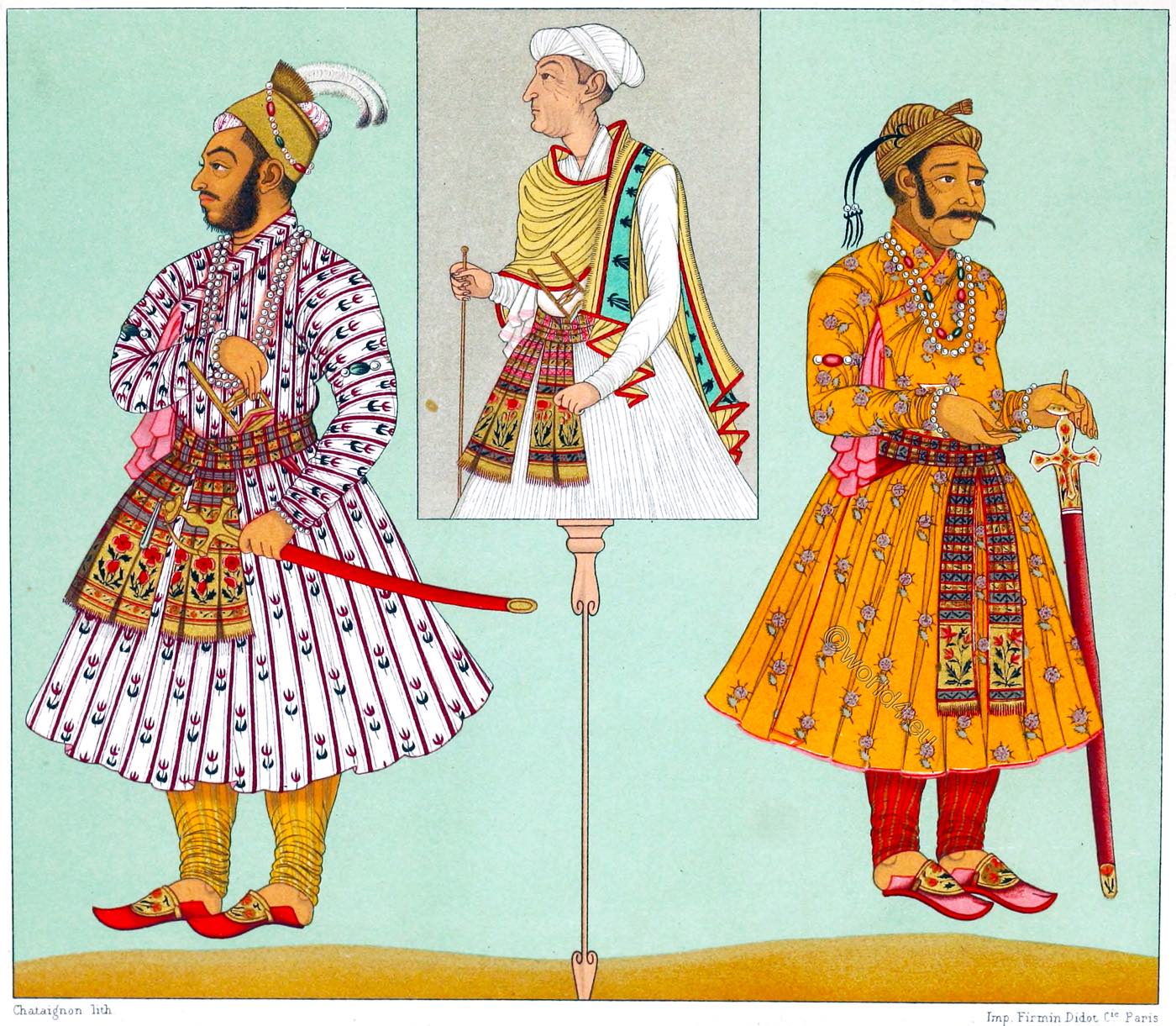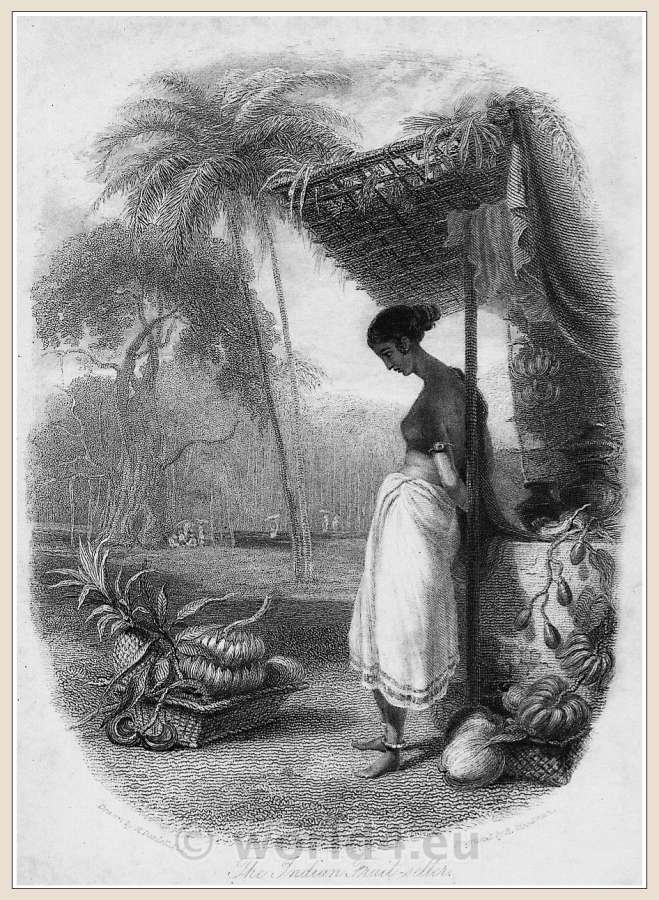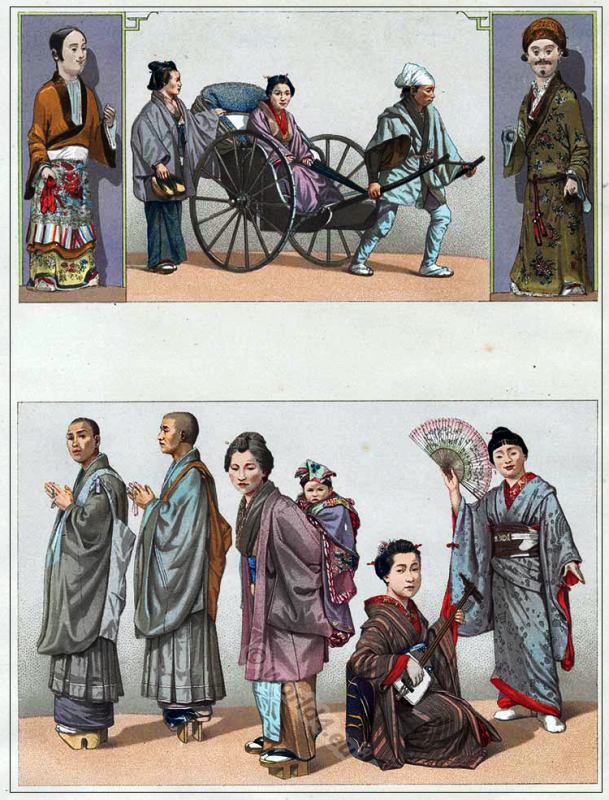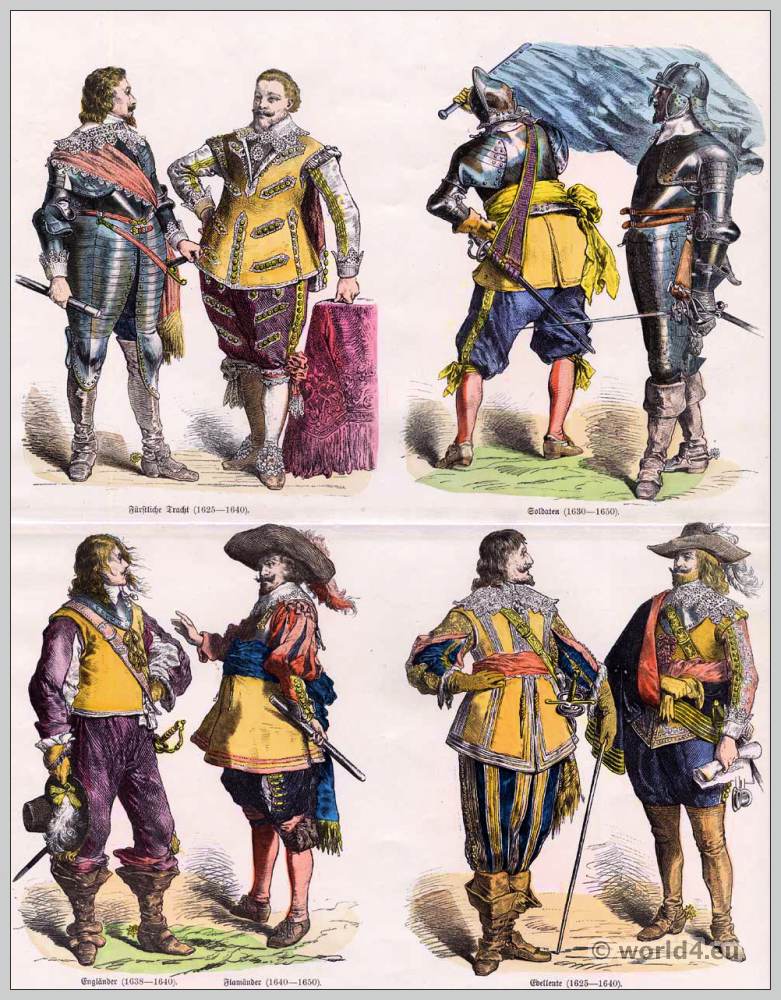
2,
1, 3,
INDIA. HIGH DIGNITARIES OF THE MOGUL EMPIRE.
No. 1. Murad Bakhsh, Imperial Prince, son of Shah Jahan and brother of the Grand Mogul Aurangzeb, 17th century. The right hand on the khuttar, the left hand on the crooked sabre with red velvet scabbard. The turban is held together by a gold band around which a string of precious stones and pearls is wound. Agraffe with plume. Necklaces and bracelets of pearls. Skirt made of silk or precious calico, as it is manufactured in Java. A handkerchief can be seen from the crossing of this skirt over the chest. The trousers, puyjamas, made of silk, cloth or satin, fall in narrow pleats down to the ankle. The naked foot is in slippers with the lace folded over.

No 2. Indian prince, governor of the Grand Mogul. White turban; cloak of honour, Kwrta; pleated in antique style. In the cashmere belt with falling ends, the Khuttar.
No. 3. Ruler of Delhi. Turban in gold brocade with heron bush with diamonds at the ends. Double necklace of pearls with rubies and emeralds. Bracelets on wrist and upper arm. Yellow skirt with knitted flowers, held together by a cashmere belt with a dagger inside. The hand rests on the Kwnda, a straight sword. Button and handle richly enamelled.
After original paintings from the library of Ambroise Firmin-Didot.
Cf. Ferrario. Le Costume ancien et moderne. – Penguilly l’Haridon, Catalogue des collections composant le Musée d’artillerie, Paris, 1862.






